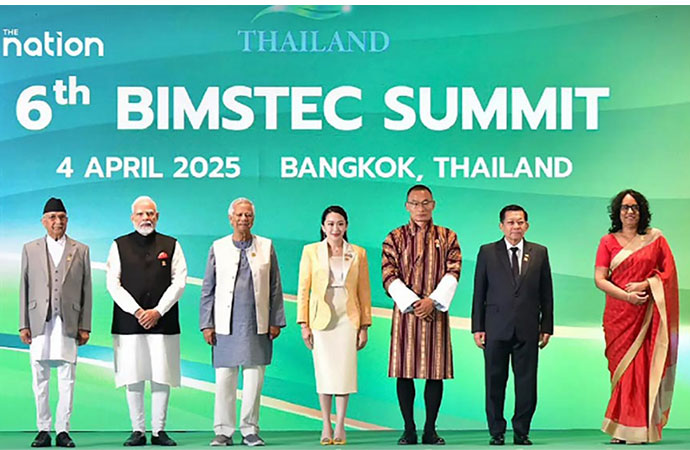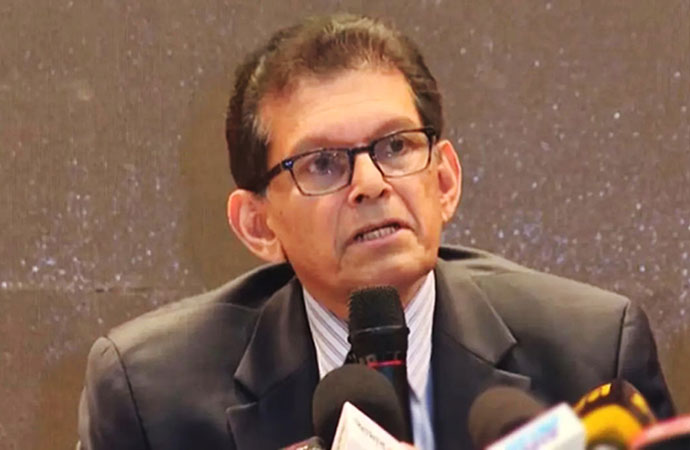Column

Collected
Shipping in the Bay of Bengal rivalled the Atlantic during the early 20th century. Both passenger and cargo traffic were comparable to trans-Atlantic shipping routes between Europe and North America. There was a massive flow of people, capital and raw materials under the free trade regime of the British Empire. The lucrative trade in gems, oil, rice and timber in Burma attracted mercantile families from the subcontinent, including the Adamjees and Ispahanis. Many of Bangladesh's leading business families in Chittagong, including those of A. K. Khan, Morshed Khan and Enayetullah Khan, had strong commercial links with Burma. Many families profited from World War Two's Burma Campaign.
At the Bangladesh Investment Summit, the interim government's chief marketing officer Ashik Chowdhury alluded to the century-old business families of the country who have built large conglomerates which are reputed for integrity and trust. According to The Economist, the Bay of Bengal should be an economic powerhouse instead of a backwater. But Bay of Bengal countries trade very little among themselves, with a paltry 6% of their overall trade. In comparison, trade between ASEAN countries constitutes 23% of their overall trade. Barriers to trade, including protectionism and non-tariff barriers, as well as the civil war in Myanmar, have obstructed efforts to develop a regional economy.
In a sign of the bay's growing importance, BIMSTEC countries signed a Maritime Transport Cooperation Agreement. According to BIMSTEC, the agreement can enhance port efficiency, harmonize maritime policies, and streamline customs procedures to ensure a smoother flow of goods. BIMSTEC aims for the agreement to boost investment in key maritime infrastructure, including ports, shipping lanes, and coastal logistics hubs. The agreement also promotes maritime safety, environmental sustainability, digitalization of shipping processes, and capacity building for port authorities.
At the recent BIMSTEC Summit, Bangladesh underscored the importance of trade agreements as the path forward, including FTAs and PTAs. Bangladesh seeks to position itself as a manufacturing and logistics hub to cater to the surrounding region. Businesses from Bangladesh can play a key role in developing the economy of the Bay of Bengal countries. Landlocked countries which depend on the bay can use Bangladesh's ports to trade with the rest of the world.
The BIMSTEC Summit also saw the ice break between Indian premier Narendra Modi and his Bangladeshi counterpart Muhammad Yunus. India reiterated its 'Neighborhood First' policy during the summit. India proposed a 21-point Action Plan, including setting up a BIMSTEC Chamber of Commerce and plans for a regional business summit, a regional sporting competition and other areas of collaboration.
However, there is skepticism about the ability of BIMSTEC states in implementing this agenda. The junta in Myanmar neither has the vision nor the expertise to implement an ambitious agenda. While Myanmar is the natural link between South and Southeast Asia, the civil war and Rohingya genocide have halted projects for regional connectivity, including proposed highways, railways and transit routes.
India's use of non-tariff barriers has been a significant hurdle for intra-regional trade. On 8 April 2025, the Indian Central Board of Indirect Taxes and Customs (CBIC) issued a notification cancelling an earlier decision to allow Bangladesh's export cargo to pass through Indian land ports and airports. In a circular dated 8 April 2025, the Indian government withdrew the earlier circular dated 29 June 2020 which granted Bangladesh the right to use India's airports and land ports for third country trade.
Bangladeshi exporters have been using Delhi's Indira Gandhi International Airport as a secondary cargo hub due to congestion in Dhaka and Chittagong. Bangladesh currently lacks a dedicated, large and exclusive cargo aviation hub to handle cargo aircraft, including the fleets of DHL and Fedex, despite rapidly growing international trade. India's decision to cancel transit rights will add to congestion in Bangladesh's cargo terminals. Indian exporters, represented by the Apparel Export Promotion Council (AEPC), lobbied against the decision in 2020 to provide transit to Bangladeshi exporters. AEPC argued that Bangladesh was given an advantage which undermined India's export competitiveness.
The cancellation of transit rights through Indian cargo hubs can affect Bangladesh's trade with Nepal, Bhutan and Myanmar. The decision of the Modi government to withdraw its earlier decision is a sharp contradiction of India's Neighborhood First policy, as well as the BJP's expressed goal of being business-friendly for the neighborhood. While India has clarified that its decision will not impact Bangladeshi trade with Nepal and Bhutan, significant non-tariff barriers continue to persist.
Freedom of transit is a cornerstone of international trade law. The General Agreement on Tariffs and Trade (GATT) stipulates that "There shall be freedom of transit through the territory of each contracting party, via the routes most convenient for international transit, for traffic in transit to or from the territory of other contracting parties. No distinction shall be made which is based on the flag of vessels, the place of origin, departure, entry, exit or destination, or on any circumstances relating to the ownership of goods, of vessels or of other means of transport".
The Trade Facilitation Agreement stipulates that "any regulations or formalities in connection with traffic in transit imposed by a Member shall not be maintained if the circumstances or objectives giving rise to their adoption no longer exist or if the changed circumstances or objectives can be addressed in a reasonably available less trade-restrictive manner". According to the TFA, no measure should be applied in a manner that would constitute a disguised restriction on traffic in transit.
Direct trade with Nepal and Bhutan is yet to take off substantially despite Bangladesh's interest to extend and integrate supply chains. In April 1976, Nepal and Bangladesh signed a transit agreement designating six points of entry and exit for traffic-in-transit. In March 2023, Bhutan and Bangladesh signed a transit agreement with fifteen points of entry and exit. Land has also been allocated for a Bhutanese special economic zone. Bhutan is also building a smart city near India and Bangladesh.
India has closed off the Ledo Road linking Myanmar and China with the eastern subcontinent. Non-tariff barriers faced by Nepal include economic blockades by groups aligned with Indian interests.
Umran Chowdhury is Research Associate, Cosmos Foundation and Bay of Bengal Institute

























Leave a Comment
Recent Posts
Have we freed the courts?
Years down the line, we may well look back on it as the interim govern ...
Will the proposed Dhaka Centra ...
The sun rises over the capital’s seven historic colleges, castin ...
A treasure-trove of ideas, forms, and colours
More than 156,000 expatriate Bangladeshis residing i ..
Roots in Rome, Heart in the Carpathians
The search for the missing Malaysia Airlines flight ..